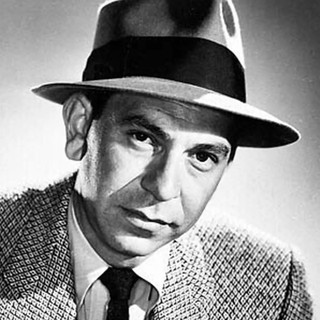It’s often difficult to predict when a crime story will tickle the media’s antennae. I still recall the puzzlement I felt when, early in my police career, I would be at the scene of some gang murder in South-Central Los Angeles waiting for the newspaper and television reporters to arrive. They seldom did, and I came to learn that most crimes in the inner city, even murders, were somehow considered less than newsworthy. Little has changed.
The Los Angeles Times and the local television stations seem to employ a peculiar calculus when deciding to cover a crime story, and in the event they do, how much coverage to give it. Among the factors weighed in this calculus are the number and age of the victims, their perceived culpability (i.e. the sympathy factor), and the crime’s proximity to a white neighborhood.
One 19-year-old gang member shooting and killing another one gets no coverage at all if it happens in South-Central, but plenty if it happens outside a Hollywood nightclub. An innocent child or elderly person unintentionally shot and killed in a drive-by might get a few column inches in the paper and a mention on the television news, as would a shooting that results in, say, three or more deaths, even if the crime occurs in the heart of South-Central and all the victims are themselves gang members. But if an innocent victim is murdered in a white neighborhood, particularly a wealthy one, it’s Stop the presses! at the papers and We’re going there live for breaking news! in the television newsrooms.
In January 1988, Karen Toshima, 27, was out with friends in Westwood, an upscale shopping, dining, and movie-going district just off the UCLA campus. Also out on the town that night were members of two rival South-L.A. gangs, and when they caught sight of each other they exchanged gunfire, with one of the bullets striking Toshima in the head and killing her. For a solitary murder, one with no celebrity connection or other “hook” to draw coverage, the resulting media storm was unlike any seen before or since. It was front-page news here in Los Angeles for days, the New York Times and other papers reported on it, as did Margaret Carlson in Time magazine.
Toshima’s murder, in a prosperous neighborhood thought to be immune to the violence that was rampant but ignored just a few miles away, changed how Los Angeles and indeed the country thought about street gangs and the crimes they committed. Los Angeles became known, almost overnight, as the gang capital of the country, with some gangs extending their reach into other major cities and even into rural areas where such activity was all but unheard of. Toshima’s was one of the 736 murders recorded in Los Angeles in 1988, and despite the attention and enforcement efforts it drew to the problem, gang violence continued to escalate until 1992, when the city saw a horrifying 1,092 murders committed. With the exception of an increase from 1999 to 2002, when the LAPD’s mismanagement was paid for in blood, the murder total has dropped steadily since then. In 2007 there were 394 murders in the city, the lowest total since 1970, when there were more than one million fewer inhabitants.
Today, with violence in Los Angeles on the decline, there is a new variable in the calculus of determining a given crime’s newsworthiness: the inter-racial factor. When a black gang member kills another black gang member it will most likely be ignored in the media, just as when both the murderer and the murdered are Latinos. But let a Latino gang member kill a black one, or vice versa, now that’s a story.
In December 2006, Cheryl Green, a 14-year-old black girl who was not involved in gangs, was shot and killed by a Latino gang member in the Harbor Gateway area of Los Angeles. Green’s murder was horrific, to be sure, but the LAPD’s and the media’s response to it was far out of proportion to the overall gang problem in the city. The alleged killer was a member of the 204th Street gang, in the city’s Harbor Gateway area, and it was declared the top target for the LAPD’s anti-gang efforts. “204th Street is gang No. 1 on the [enforcement] list,” LAPD Chief William Bratton told reporters in February 2007. “We are going to do everything we can with the city attorney and district attorney to go after them.”
This response, though surely welcome in the affected neighborhood, was completely out of proportion to the overall violent-crime problem in Los Angeles. Green was one of 20 murder victims in that particular patrol division in 2006, while eight of the city’s other divisions had more. Two divisions had more than twice that number, and two others had more than three times as many. The difference: the great majority of those other murders were intra-racial and thus ignored by all but the investigators assigned to them.
Today it is much the same. An interracial rivalry in South-Central Los Angeles has attracted more media and law enforcement attention than intra-racial ones that have caused more bloodshed. The Florencia 13 gang, said to be responsible for 20 murders and many more shootings targeting black gang members in the Florence and Firestone areas of South-Central L.A., was targeted by combined task force of federal and local law enforcement officers, and last month more than 100 members of the gang were indicted on various federal charges. Again, a welcome relief to the affected neighborhoods, but little consolation to those nearby areas where blacks are killing blacks and Latinos are killing Latinos.
The lesson for L.A.’s gang members: keep the killing within your own neighborhood and your own race, and you’ll keep it out of the news.
“Jack Dunphy” is the pseudonym of an officer with the Los Angeles Police Department. The opinions expressed are his own and almost certainly do not reflect those of the LAPD management.










Join the conversation as a VIP Member